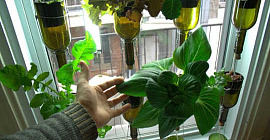

The Truth About Tooth Decay
Wednesday, 19 May 2021 09:40To “cry poor mouth” is an expression used to habitually complain about a lack of money. A literal poor mouth, however, represents one of the most widespread global diseases: tooth decay.

Why I Love Wasps -- And Why You Should Too
Saturday, 08 May 2021 08:43Humanity has always had a rocky relationship with wasps. They are one of those insects that we love to hate. We value bees (which also sting) because they pollinate our crops and make honey

To Lower Cancer Risk, Eat More Mushrooms?
Wednesday, 28 April 2021 08:57Replenishing antioxidants in the body may help protect against oxidative stress and lower the risk of cancer

Your Body Is a Garden, Not a Machine
Sunday, 16 May 2021 14:24The human body is an amazing thing, full of systems, organs, nerves, and vessels that work together in harmony. You’ve seen the body described as a machine, as a city, or even as a factory....

Eating the Rainbow: Food Colors and Chakra Correspondences
Friday, 14 May 2021 16:24The chakras set the frequencies that give rise to every aspect of the human experience. The foods we eat have consciousness and provide an energetic blueprint that stabilizes and entrains...

How Our Immune System Fights Respiratory Viruses: Explained
Friday, 28 July 2023 17:45Respiratory viruses like influenza virus (flu), SARS-CoV-2 (which causes COVID) and respiratory syncytial virus (RSV) can make us sick by infecting our respiratory system, including the nose, upper...


